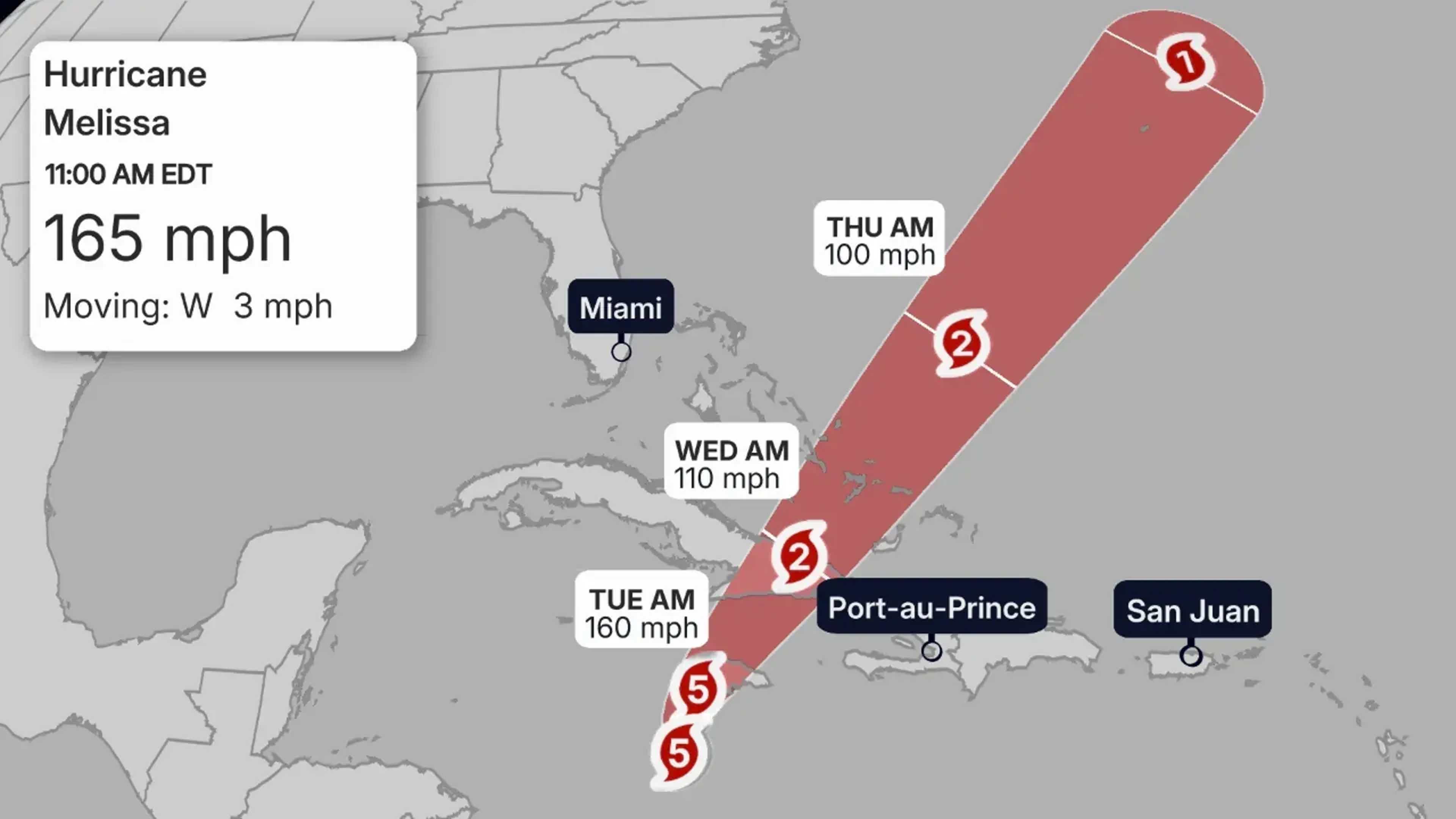Hurricane Melissa, a monster Category 5 storm, barreled into Jamaica Monday morning, unleashing record-breaking winds, torrential rainfall, and life-threatening storm surges. The system—one of the most powerful ever observed in the Caribbean—has already caused flooding, power outages, and widespread devastation as emergency crews brace for the long night ahead.
According to the National Hurricane Center, Melissa made landfall near Kingston with sustained winds estimated at 160 mph and gusts surpassing 190 mph. The slow-moving storm is crawling northwest at roughly 3 mph, prolonging exposure and dramatically heightening flood risks. Officials warn that its crawl could make damage far worse than a faster-moving system.
Emergency shelters across the island are packed, with more than 800 centers opened ahead of the storm. Airports have suspended all operations, while ports and public transit systems were shut down. Roads across southern parishes are reportedly blocked by debris, toppled trees, and downed power lines.
WATCH:
Meteorologists say Melissa’s intensity caught even seasoned forecasters off guard. What began as a tropical wave off the coast of Africa just ten days ago exploded into a Category 5 hurricane in less than 48 hours, a rate of strengthening known as “rapid intensification.” Experts attribute the extreme conditions to unusually warm ocean waters—running two to three degrees Celsius above normal—which provided the perfect fuel.
The damage potential is staggering. Storm surges reaching up to 13 feet have swallowed parts of Jamaica’s southern coast, inundating low-lying neighborhoods and small fishing towns. In Kingston, social media videos show roofs ripped off homes and transformers exploding as the eye-wall passed overhead. Heavy rains, expected to total more than 20 inches in some regions, are causing flash floods and triggering landslides in the island’s hilly interior.
Neighboring nations are also on high alert. Haiti and the Dominican Republic have already seen torrential rain and flooding from Melissa’s outer bands, while Cuba, the Bahamas, and the Turks and Caicos Islands brace for impact as the hurricane drifts slowly northward through mid-week. U.S. forecasters say the mainland will likely be spared, though Melissa’s remnants could produce rough surf and rip currents along Florida’s east coast.

via Weather Channel
International aid groups are positioning teams in nearby islands for rapid response once conditions allow. The United Nations and Red Cross have both pledged emergency support for Jamaica, where communications are already spotty across multiple parishes. Electricity company JPSCo reports that more than half a million residents are without power, with repairs expected to take days or weeks.
The 2025 Atlantic hurricane season has already produced three Category 5 systems, underscoring a worrying pattern. As night falls, Jamaican authorities are urging citizens to stay put and avoid floodwaters. The country’s Office of Disaster Preparedness warned that rescue crews cannot safely reach many affected zones until winds subside.
For now, the island faces a long and punishing wait as Hurricane Melissa grinds slowly westward, testing the resilience of a nation that has endured many storms—but perhaps never one like this.




